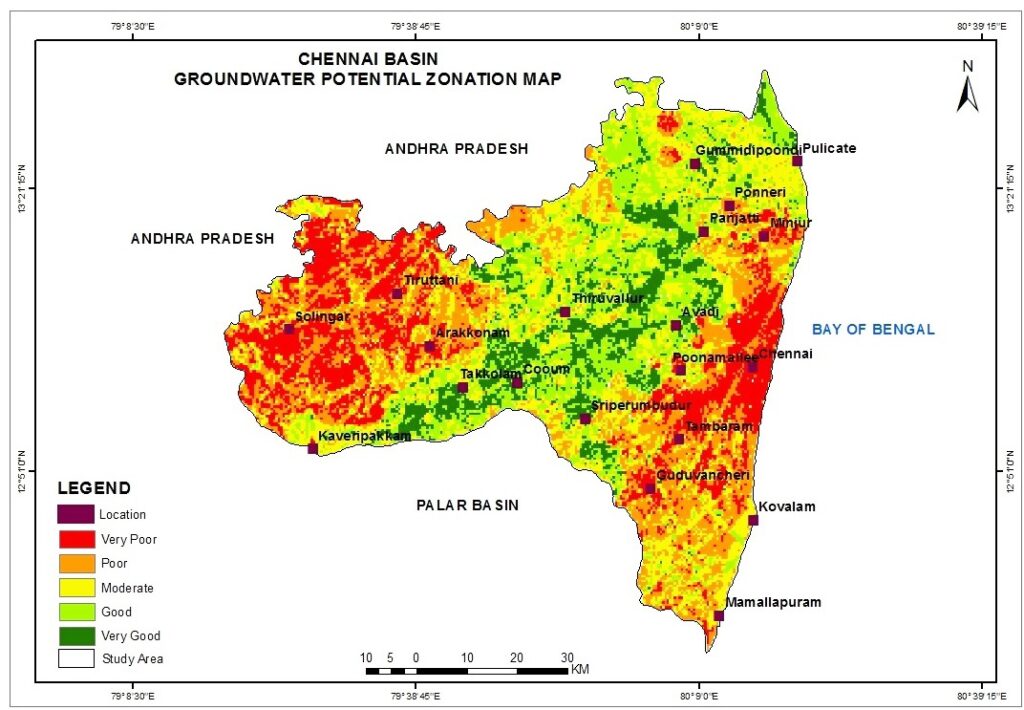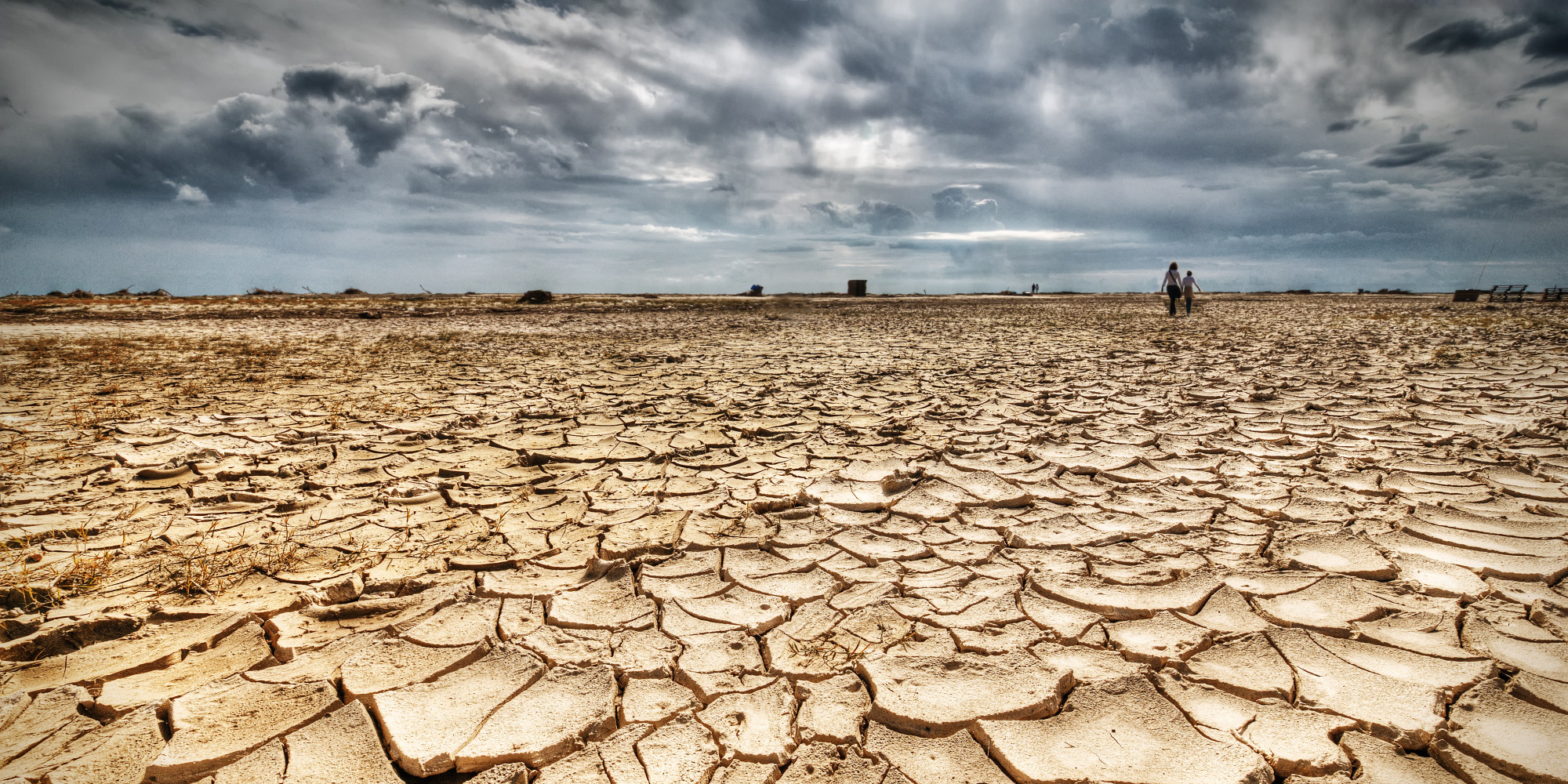Neethi Lisa Rojan | Jan 10 2023
The landmark of Seppakkam village in the Ennore region, surrounded by wetlands and ash ponds on either side of the road, is a water tank. This tank, ironically is the symbol of one of the many hardships that villages in this industrial region face throughout the year— drinking water.
Pollution and salinity intrusion—seepage of saline water to groundwater—from the nearby thermal plants, industries and ports has turned the groundwater potential of this region to “very poor”, ac- cording to an Anna University report.
While nearly 38 per cent of the river basin in Chennai has poor groundwater, said the same report, urban Chennai has access to clean drinking water through cans or purifiers as opposed to Seppakkam that does not. The groundwater has turned salty and we have not used it for many years, said five residents of Seppakkam to The Bottom- line. The water from the region has harmful levels salt and metal concentration, said a government report titled “Expert Committee Report for Assessing the Damages by Fly Ash in the Ennore Backwaters”, published in March 2022.
A Rs.22 lakh Reverse Osmosis (RO) plant was installed in 2020 by Larsen & Toubro Hydrocarbon Engineering, which has a Modular Fabrication Facility in the nearby Kattupalli village. The water for the plant is pumped in from a nearby village, said S Nagamma, the 32-year-old who operates the plant. The representatives from L&T Hydrocarbon Engineering in- structed me on its operation when it was inaugurated, she added.

The duties of maintaining the motor and other mechanical aspects of the RO plant were handed over to the Kattupalli Village Panchayat, said Vinay Rajani from the Public Relations team of Larsen & Toubro Hydrocarbon’s communication to The Bottomline. The RO plant, which operates for only two hours in a day, needs oil every month. Nagamma collects Rs.5 for 20 litres of water, which largely contributes to the cost of oil.
As on January 4, 2023, when The Bottomline visited the village, the RO plant was inoperative for five days due to its dysfunctional motor. Nagamma said that she had been trying to call the Block Development Officer (BDO) who was the point of contact to fix the issues of the RO plant, for the past few days.
When the water purifier is not functional, villagers find it hard to transport water to the village. They travel to Minjur, a town five kilometers away from the village, in their private vehicles. Seppakkam also has not had any public trans- port in the past 15 years, according to villagers.
Muniyammal, a resident in her eighties, has to depend on her daughter, who lives far away, to bring her drinking water once a week. “The working of the RO water plant was satisfactory after handing over the duties to the Panchayat,” L&T Hydrocarbon Engineering said in an email reply to The Bottomline. The repairs were delayed because the person in charge was attending a family medical emergency and would be rectified soon, it said. The Bottomline was unable to reach the BDO assigned to attend the issue. Previously, a concrete overhead water tank supplied water to the people of the Seppakkam from the regional water supply board, Chennai Metropolitan Water Supply and Sewerage Board (CMWSSB). This water, however, was not available throughout the year as underground water pipes to the tank burst frequently.
“We cannot drink the water from the overhead tank,” said Ilayaselvi, a resident of Seppakkam, “On some days, the water is yellow, on some days, white, and ashy on the other days. If we cook using that water, the food gets spoiled. “Before the water tank, about 15-20 years ago, the villagers used to go in tractors to collect 200 litres of water drums from the nearby town of Minjur.
Industrial Effects
About 20 years ago, the village had ample groundwater resources. Slowly fly ash disposal built up due to the nearby thermal power plants. After the Kattupalli Shipyard was set up in 2012 by L&T, the village saw salinity intrusion into the groundwater, and water became unfit for human use. The water from the region has high salt, aluminium, arsenic, lead, manganese and zinc concentration, said the March 2022 government report. Dangerous levels of these metals can damage the nervous system, impair hearing, cause gastro-intestinal diseases, affect brain development in children, and even lead to Alzheimer’s disease. “Groundwater recharge efforts are important in these areas,” said P.J. Sajil Kumar, lead author of the Anna University report. “Normal groundwater has lesser density than the saltwater which has intruded into these North Chennai villages. This recharged water will remain above the saltwater and can even push out the saltwater in long-term making the ground- water fit for human consumption.” While the problem of water shortage is not unique to Seppakkam in Chennai, coupled with extreme pollution, salinity intrusion and water shortage makes life tougher for people in this industrial belt.

